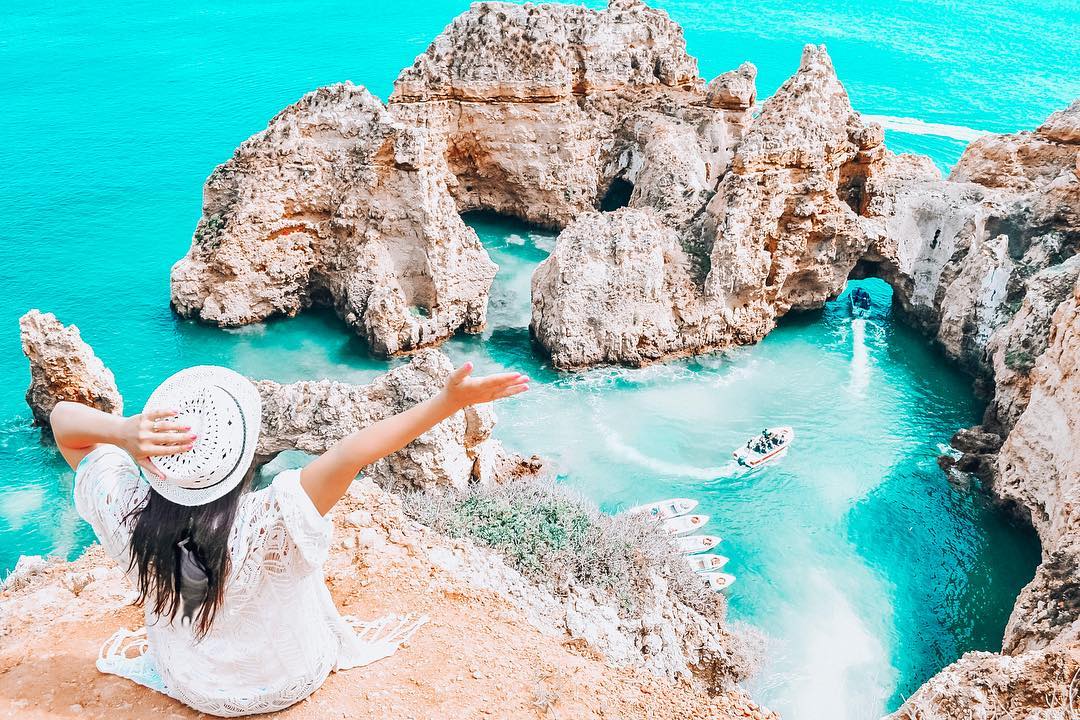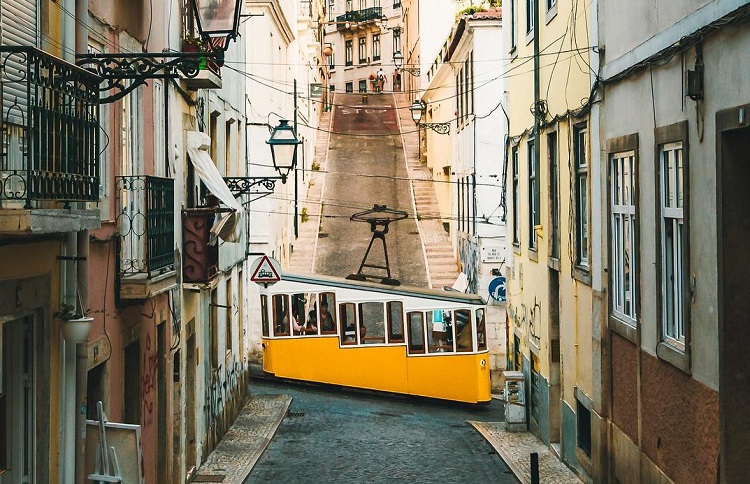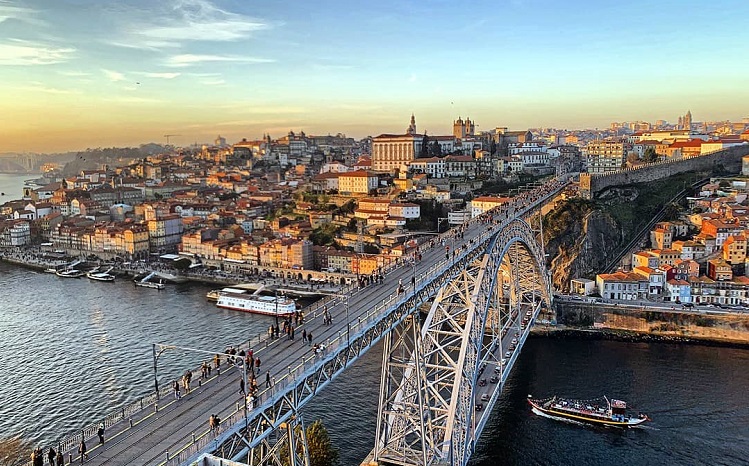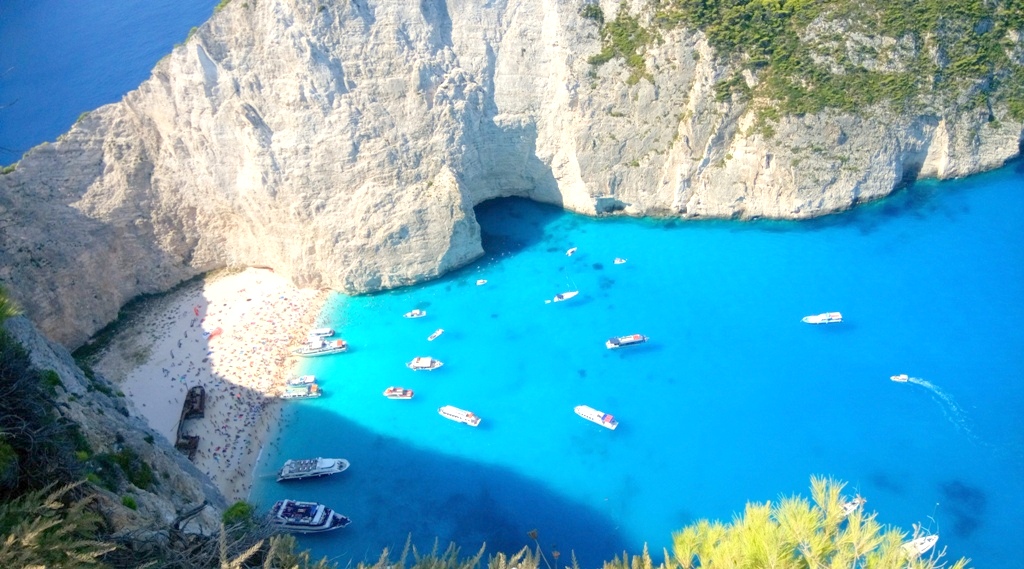Albufeira City History Guide Portugal
Albufeira was occupied by the Romans over 2000 years ago, Albufeira has developed an economic activity based on fishing and mining in the area. In the eighth century the Arabs invaded the peninsula and took the city, changing the name of this Roman - Baltum - to Al - Buthera.
During this period, the municipality developed an important trade with North Africa, and the Arabs built walls to protect the city and the castle of Paderne, which can still be visited.
In 1249, with the Christian reconquest, Albufeira began a new period of its history. The fifteenth and sixteenth centuries mark a phase of economic development driven by maritime discoveries. And precisely in 1504 Albufeira receives the letter from the city from the hands of King Manuel I.
In the eighteenth century, the 1755 earthquake caused great destruction and led to the decline of the population, which was only recovered in the nineteenth century thanks to the emergence of the canning industry.
An impressive coastline of creamy, copper-covered cliffs and a wide range of beautiful, sun-drenched beaches have transformed Albufeira from the small, peaceful fishing village of the former Algarve holiday paradise and favorite destination of today. Albufeira is currently experiencing a new period of prosperity. A city in 1986, it is now considered the capital of Algarve tourism.
The charm is understandable: the beaches of Albufeira come in all shapes and sizes and are equally attractive. They range from secluded sandy coves to postcard landscapes that combine sea, sand and delicious rock outcrops.
More than half of these beaches carry the prestigious Blue Flag and offer a wide range of water sports services and facilities, while the flanking complexes offer endless entertainment and leisure activities. The wide diversity of bars, restaurants and nightclubs has made Albufeiras nightlife the most famous in the Algarve, while numerous golf courses, a marina, childrens theme parks and abundant shopping opportunities offer many additional daytime distractions.
The city of Albufeira has three magnificent and long sandy beaches: Pescadores, Peneco (also known as Tunnel beach) and Inatel.
The colorful fisherman fishing boats on the beach are present reminders of the citys fishing past and while anglers continue to provide local restaurants with their daily catch, boats also cater for scenic visits to the natural caves that grace this shoreline. A pleasant walk connects Peneco beach with the vibrant marina of Albufeira.
It offers stunning views of Albufeiras picturesque coastline from its cliffs overlooking the beaches of Santa Eulalia, Sao Rafael and Falesia, the luxurious Grande Real Santa Eulalia resort and CS Hotel Sao Rafael Atlantic and Pine Cliffs Hotel offer access to Beaches located below, The privacy of secluded places and exceptional accommodation and facilities.
Porto Bay Falésia has a fantastic cliff-top location, while the exclusive CS São Rafael Suite Hotel, located within walking distance of Sao Rafael beach, impresses you with its contemporary elegance and tranquil ambience. Located in a quiet area of Albufeira, Real Bellavista Hotel & Spa offers a wide range of facilities and a shuttle service to the beach and the city center. With a unique beachfront location with direct access to the sand dunes of Salgados beach, the new Vidamar Resorts Algarve is a luxury hideaway where guests can also enjoy the natural beauty of the Salgados lagoon protected wetlands found nearby.
Albufeiras old town center has a delicious traditional feel. The whitewashed houses and narrow cobbled streets, full of cafes and shops, lead to a picturesque central square, surrounded by bars and restaurants, where you can enjoy some local fish-based cuisine. And if you are looking for a night party, there is a lot of fun in Albufeira. The area known as "The Strip" is a succession of thriving bars, restaurants and clubs - and the center of Albufeiras nightlife.
Outside the complex, the landscape changes dramatically as the coast is left behind and the interior unfolds into an expanse of hills covered with almond, fig and orange trees dotted with peaceful farming villages.
During this period, the municipality developed an important trade with North Africa, and the Arabs built walls to protect the city and the castle of Paderne, which can still be visited.
In the eighteenth century, the 1755 earthquake caused great destruction and led to the decline of the population, which was only recovered in the nineteenth century thanks to the emergence of the canning industry.
An impressive coastline of creamy, copper-covered cliffs and a wide range of beautiful, sun-drenched beaches have transformed Albufeira from the small, peaceful fishing village of the former Algarve holiday paradise and favorite destination of today. Albufeira is currently experiencing a new period of prosperity. A city in 1986, it is now considered the capital of Algarve tourism.
The charm is understandable: the beaches of Albufeira come in all shapes and sizes and are equally attractive. They range from secluded sandy coves to postcard landscapes that combine sea, sand and delicious rock outcrops.
The city of Albufeira has three magnificent and long sandy beaches: Pescadores, Peneco (also known as Tunnel beach) and Inatel.
The colorful fisherman fishing boats on the beach are present reminders of the citys fishing past and while anglers continue to provide local restaurants with their daily catch, boats also cater for scenic visits to the natural caves that grace this shoreline. A pleasant walk connects Peneco beach with the vibrant marina of Albufeira.
It offers stunning views of Albufeiras picturesque coastline from its cliffs overlooking the beaches of Santa Eulalia, Sao Rafael and Falesia, the luxurious Grande Real Santa Eulalia resort and CS Hotel Sao Rafael Atlantic and Pine Cliffs Hotel offer access to Beaches located below, The privacy of secluded places and exceptional accommodation and facilities.
Albufeiras old town center has a delicious traditional feel. The whitewashed houses and narrow cobbled streets, full of cafes and shops, lead to a picturesque central square, surrounded by bars and restaurants, where you can enjoy some local fish-based cuisine. And if you are looking for a night party, there is a lot of fun in Albufeira. The area known as "The Strip" is a succession of thriving bars, restaurants and clubs - and the center of Albufeiras nightlife.
Outside the complex, the landscape changes dramatically as the coast is left behind and the interior unfolds into an expanse of hills covered with almond, fig and orange trees dotted with peaceful farming villages.
Outros Artigos Populares no Blogue
-


The 50 cultural things you have to do at least one in Portugal
Participate in a half marathon in Lisbon and have the privilege of running over the 25th of April Bridge - Running a marathon, p... -


Top 20 Tourist Attractions in Portugal
Visiting Portugal is discovering a remarkably diverse destination. Inextricably linked to the sea, the country boasts over 800 kilometers of se... -


The best Douro attraction on the Luxury Panoramic Cruise
Esmeralda Radiance will explore the Douro region, navigating the Douro River. Dissecting some of the most beautiful vineyards and wine-produc... -


Top 7 Things to Do in Lisbon Portugal
Lending the absolute lyricism in the city, Lisbon can be defined as the European capital that always looks to distant and unknown worlds. From th... -


This is the Portuguese beach that locals make even in winter Madeira Insland
Winter temperatures in Madeira reached 27º C this week, many Madeirans took advantage of the heat to take off their coats and take a dip in the p... -


The 8 Most Beautiful Cities in Portugal
A charming and diverse country, full of beautiful Mediterranean beaches, rolling hills, stunning mountain landscapes and a myriad of charming citi... -


Tips on Holiday Shopping in Portugal
Regardless of where it is made - from the Azores to the remote northern province of Trás-os-Montes - goods from all over the country end up in ... -


Portuguese in the list 15 of the most beautiful beaches on the planet
The elements that make up the perfect beach vary by traveler. Some yearn for the sugary sand and crystal clear waters of the Caribbean, while oth...
